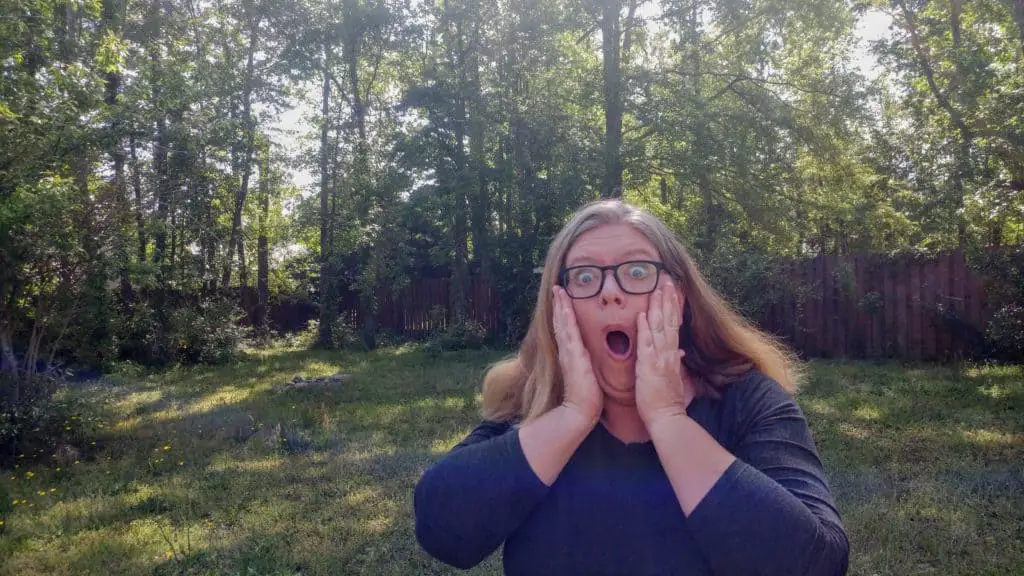You have heard it, read it and lived it. Best time to plant is in the spring and fall. I have repeated it myself. Yes, it is true. HOWEVER, that does not mean you need to avoid the other times of the year. It just means that it depends on your climate, how, when and if you can plant the rest of the year.
YES, you can plant any time of year! Remember, the plant, until recently, was in a pot and still will need to be watered when dry, as if it was still in a pot. Until that plant is established, when its root system grows to the size the root system it would have been, if grown there, from seed. That is when its root system is balanced with the foliage it needs to support without assistance. Until then, irrigation is necessary.
First, let me clear up, I am taking planting, NOT transplanting.
Transplanting is when you dig a plant up from your garden, ripping up and destroying much of the root system, despite your best efforts. Planting is taking a plant system with an intact and functioning root system and putting it in the soil.
Here I am discussing PLANTING.
Transplanting I will cover in related questions below.
Now that that is out of the way, can you plant ONLY in the spring or fall? No, you CAN plant other times of the year, including summer.

Before I lose a bunch of people, yes, I can see you shaking your heads, let me ask you this. Would you hesitate to buy a potted plant, growing in the same conditions as you have, and pot it up in a larger container?
Toni, BesideTheFrontDoor.com
Of course not. You would, of course, realize it will need to be checked more often if it needs water, more often than the same plant you put in a larger container months ago. (If you don’t, well you will be headed back to the garden center again for another..)
Now, apply the same concept to planting a container-grown plant into your garden, a much larger container to be sure 🙂
Let me start with verbally painting a picture of two different climates I have lived in, and why this question is not always as it may seem like it should be.
When I lived up in New England (zone 4 US), the summers are cooler, with nighttime temps falling into the 50’s and 60’s at night. Almost every morning there would be a thick layer of dew when I woke up. It rained often and gently. This made great conditions for, if you planted just about anything, all that was required was to water in deeply. Watch carefully and water again a few times and if in cases of drought. Yes, yes, it was still best to plant in spring and fall, then you just plant, water in, and that’s it.
While I am at work here in Middle TN, zone 6 (US), where summer temps are in the 90s and drop down into the 70s at night. I rarely find dew on the grass in the morning, and when it rains, it is often a violent quick downpour that runs off. I am surrounded by new housing developments as far as the eye can see… This is relevant because in building those new neighborhood developments, the shade trees are removed. The topsoil is removed. Both of these things make it difficult conditions for establishing a new garden. Yes, I know you paid extra for topsoil to be laid. With development growing so fast, I am uncertain of how ‘topsoil’ is defined in the housing development building industry. It certainly is not how I, as a gardener would label topsoil….but, I digress.
Here in middle TN, with these soil and temperature conditions, it does not matter when you plant, you really need to have irrigation, regardless of when you plant, or it is a real gamble for your plants until established at least. This being true, you can plant container-grown, or ball & burlap already dug the previous fall, anytime the ground is not frozen.
These plants can and will be kept from year to year growing in thin-walled plastic pots, or with burlap root balls above ground is subject to temperature variations and dryness they would not have found if planted in the ground. And they are fine. In the winter, yes, they need and get their roots insulated against the below-freezing dips that occur with help from us, but they are fine.
They are still happier with their roots in the ground. Now that is true whether you put their roots in the ground in May or in August. Both times they are still happier in the ground. The main difference is when they are in a pot, it is common knowledge that they need to be monitored for water. In Middle Tennessee, landscapes are routinely watered and it is not unusual to need to irrigate every summer, and irrigation systems are installed for that purpose. Making watering these new plantings, be it May or August, routine.
So YES, you can plant any time of year! Just remember that plant until recently, was in a pot and still will need to be checked, and watered if getting dry. Until that plant is established…meaning has enough time to grow its root system until it matches the root system it would have had if grown there, from seed, so its root system is balanced with the foliage it needs to support without assistance, irrigation is necessary.
Here is an analogy to illustrate. It is as if you were dropped in a country that spoke a language you do not speak. At first, you are dependant on a translator to get around and do what you need to do. As time goes on, you naturally pick up more and more of the language being spoken around you, relying on translation less and less. Occasionally you will be exposed to a completely new situation, with its new vocabulary (drought), and you will need to rely on translation again, but over time you can communicate as if you grew up with that language.
Like the plant relies on external watering to supplement to do what it needs to do (grow), and over time, can be years, it will become established, and act as if it had grown there, from seed.
Yes, in the spring and fall the conditions are more favorable for transplanting. Like if the place you go where you do not speak the language has a percent population that speaks your language, but depending on the growing conditions, soil, temperatures, and rain, you still have to help the plant become established.
To choose the best plants for your conditions, every time, read here!
Can I only transplant plants in the spring and fall?
Here I am defining transplanting as digging out of your garden to move and plant again in another area of your garden. (This is NOT when you are taking vegetable ‘transplants’ from their pots and planting into your garden.)
I do strongly recommend transplanting to happen in the spring or fall.
Transplanting will, as careful as you can be, still, damage a portion of the functioning root system. The most active part of the root system, the part that does the most work, is the root hairs. These are the 1 cell-wide very tips of the roots that uptake the water and nutrients. Think of them sort of like the capillaries of the plant. Small but mighty. Also delicate. Just the act of moving the plant shifts the soil, ever so slightly which can dislodge and break these root hairs, which need to be regrown to start uptaking water again. Have you ever transplanted a plant, to have it wilt severely, just to recover a week later? It was regrowing those vital root hairs. Even if you drop a root ball of a tree from the back of your truck to the ground, that shock will damage those vital root hairs and the plant will need to re-grow them to move on with the business of establishing itself in the new site.
Give a plant the best chance possible, be careful.
Now that being said, if you find yourself absolutely needing to move a plant in the summer, for instance, it is worth a shot, but the chances of success are reduced, and the larger the plant, the lower the success rate.
To get the greatest success if you must transplant in an inopportune time of year, there are two ways to help with the successful moving of your plant.
If this is a deciduous plant, one that drops its leaves every fall, cut back much of the foliage, to balance leaves and the reduced root system. How much you ask? Depends on how big your plant is and how long it has been there. The more established the plant, the more you need to cut off. As much as you can bear to is about right :).
If you have even a week of notice that the plant will need to be moved to make way for digging a trench, for instance, the more notice the better, this step will make a huge difference in your success of moving. Root prune the shrub or tree. This is commonly done by either taking a very sharp spade and pushing it down into the soil cutting the roots. Or digging a trench around the plant, cutting the roots. How far away from the trunk you ask? Do this root pruning close to the trunk or base. Be sure you are close enough to be INSIDE the soil area that you are moving with the plant.
This root pruning forces the plant to begin the growth of new active (read here, working to uptake water) roots, and within the area, you are moving, so the new roots can be active immediately. Is it enough to move this plant without all the other care and watering and pruning? NO, but it will just push the odds further in the plant’s favor.
If it is an evergreen plant, one that does not drop all of its leaves every fall, do not cut back deeper than you currently have green growth (needles, leaves). You can spray with an anti-desiccant such as WiltPruf, a natural product that reduces water loss from the foliage. Click here to see on my favorite things page.
Now proceed like normal to move this plant, water deeply the day before. Dig the new hole first, yes you may need to modify that hole, but use your best estimate to start. Dig in the morning if possible. Dig and move as large of a root ball as feasible. Move into the new hole directly, don’t take a break, do it directly. They rush a transplanted organ to the new person as quickly as possible, don’t they? Same idea. Plant in a new area, mulch, and water in deeply. Check often, depending on your soil, that may be daily, or bi-weekly, for the soil gets dry. Water in accordance with the dryness of the soil, not the wiltedness of foliage. Wiltedness, I think I may have coined a new word 🙂 Keep soil evenly moist, not soggy wet, do not let dry out completely, until new foliage growth starts to appear on your plant. That is a good sign it is well on its way to recovery and it has regrown enough roots to support new growth. Sit back, pat yourself on the back, and relax. Success, you did it!


